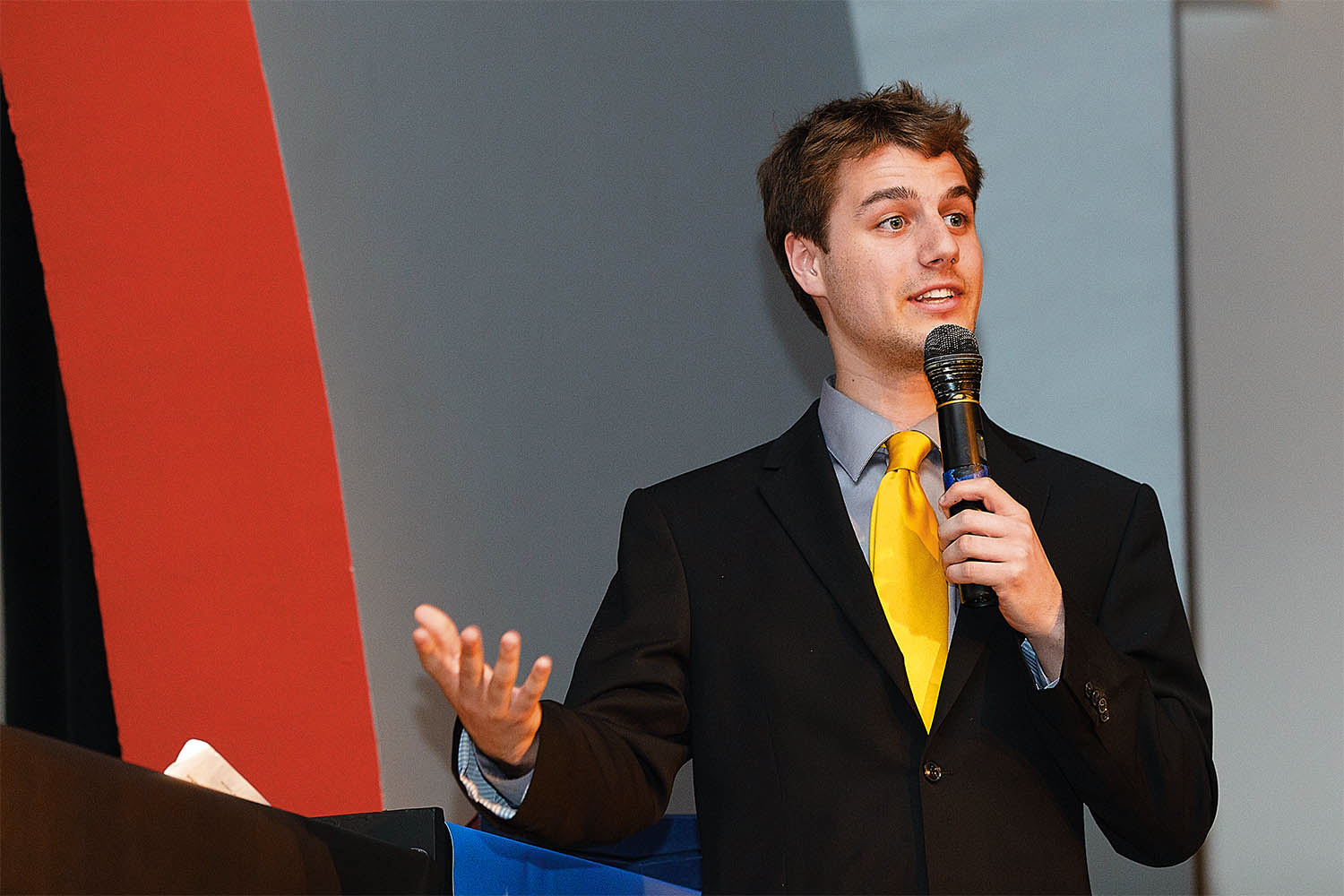Industrial design students win international award for innovative cellphone device operated by facial muscles

A team of rising juniors in the College of Architecture and Urban Studies’ Industrial Design program won a Silver for Best Accessibility Innovation in the 3rd Annual International User Experience Awards.
They were the only student team recognized in the international competition. Other notable winners included Google, and the students placed ahead of projects from major companies like BMW North America, Nike, and American Express.
Their winning design, called Activ, was a class project created by three students in Assistant Professor Akshay Sharma’s second year studio course. Conor Brown of Blacksburg, Michelle Murgia, of Poolesville, Md., and Cole Smith of Charlottesville, Va., all industrial design majors in the College of Architecture and Urban Studies’ School of Architecture + Design, designed a solution that makes cell phone use easier for a person who has lost a limb due to a major injury.
The scenario behind Activ’s design was a woman who lost her dominant arm while in a war zone, and who returned to lead an active lifestyle and build a career in construction management. The team explored the problem by simulating what it would be like for someone in her shoes. In fact, each team member spent days going through their daily activities with one arm tied behind their back. Through that experience, they discovered that the biggest challenge they faced was not being able to multitask, something most cell phone users take for granted.
Activ allows the users to operate their cellphone by clenching their jaw muscles, as demonstrated in the video entry they submitted to the competition.
“I think the best part of traveling to New York was understanding the magnitude of what my team had actually accomplished. None of us knew who the other winners were, so I assumed we had just won some sort of student competition. Learning that we were the only student winners — and won a second place award — was pretty invigorating. This is the first professional-level award any of us have earned, so it's very exciting for all of us,” said Smith.
“I believe we won this award because of our focus on research. Each of us took a few days to a week using only one arm for all of our daily tasks, and this part of the project was really highlighted on stage during the awards. It means a lot to me that this extra effort on our part was recognized by outstanding professionals from Google and Mashable.”
Each year, students in Akshay Sharma and Professor Mitzi Vernon’s studios work with the Wireless Rehabilitation Engineering Research Center to explore universal design in wireless technologies to make them more accessible for individuals with special needs.
Each student team faced a specific accessibility challenge for which they needed to develop a design solution. In addition to the amputee scenario, those challenges included making cell phone use easier for individuals with macular degeneration, chronic obstructive pulmonary disease, or a traumatic brain injury.
Vernon and Sharma worked closely with one another throughout the process, and Brennon Bortz of San Jose, Calif., a doctoral student in the College of Engineering’s Department of Computer Science whose research focuses on music, emotion, and affective computing served as an advisor for the project. James Muller , an industrial designer for the Wireless Rehabilitation Engineering Research Center has been a point of contact for the design exercise for the last four years.
This is the first time Sharma’s students have entered these International User Experience Awards, and he is thrilled with the results. He also feels that the award is part of a larger picture, reflecting the excellence of the students and the education they are receiving.
“It’s not just this. We have been doing really well at the international level with our projects,” said Sharma. “So I think it says a lot about our students, it says a lot about the pedagogy we apply here and the way we are utilizing the studio environment. We are creating an environment where they can think creatively.”
Virginia Tech’s Industrial Design program is currently ranked third nationally by DesignIntelligence.




